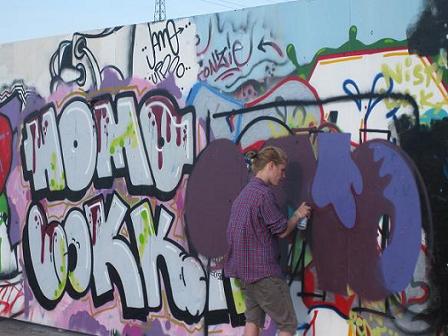J. L. Morin
Posted: 7/28/11 12:01 PM ET
First published in the European Daily July 21, 2011
An art installation in Helsinki entitled "My Favorite Call Girl from the People's Republic of China" points out the reality of prostitution for export by China. The art work offers up "lotus blossoms," six-at-a-time, from a freight container to show what we get with the usual imports from China.
The work uses video within the crate to show a variety of young Chinese woman, demonstrating how interchangeable they are in the eyes of the slavers. Finland has a history of exposing traffickers led by Eva Biaudet, the Finnish National Rapporteur on Trafficking in Human Beings and former OSCE Special Representative on Combating Trafficking in Human Beings, but only recently has the world woken up to focus on the canker of sex slavery.
In my book, Travelling Light, I shed light on the modern-day slave trade in the Mediterranean, which according to Hilary Clinton's 2010 Trafficking in Persons Report is about to outstrip drug trafficking. I feel that art is our most potent weapon to fight slavery because it raises awareness on an intuitive level.
"Artists can try to do something here that they wouldn't dare do elsewhere," says Timo Wright, curator of the "Container of the Unknown" at the Fish Harbor Container Square, the site of the art installation. Artist Riiko Sakkinen, who travelled widely in Peking and throughout China, where the economic conditions are ripe for slavery. He was given complete freedom for his geisha girl installation with only one guideline: the exhibit couldn't be racist. (It's tastefully done.) What's on display is raw experience without context, as the artist's identity remained a secret until the last day of the show.

Sakkinen is the founder of Turbo Realism, a 21st-century art movement depicting globalized capitalism with a mocking verisimilitude. The phrase "Made in China" also applies to exploding prostitution that according to research is spreading uncontrollably. Prostitution constitutes a big chunk of the Chinese economy, although it is illegal with harsh penalties for both sellers and buyers.
To immediately satisfy increasing demand in the West, sex workers now unload Chinese girls (once sold as Japanese girls) under their own nationality. Hard to comprehend this trade coming from a country where girl fetuses are aborted at an alarming rate and men have a hard time finding wives, and going to Finland where women don't let men pay for them in restaurants. Finland is one of the few countries doing something about slavery. Eva Biaudet has made it her business.
During the annual US Government release of the 2010 Trafficking in Persons Report, Hillary Clinton recognized Biaudet for studying human trafficking in Finland without beautifying the situation and for motivating her country to take the issue seriously. That's where we are: in the 21st century, just taking the issue seriously, with 27 million actual slaves worldwide in 2011.
"Unfortunately, trafficking in human beings is not always recognized by authorities... even when it is reported by the victim," says Biaudet. "They are not always able to put together the varied aspects of the cruel exploitation that constitutes human trafficking and suspect trafficking." Like the US, Finland is a Tier 1 country according to the US State Department 2010 Trafficking in Persons Report. Tier 1 is the highest ranking. But it does not mean that a country has no human trafficking problem. It indicates that a government has acknowledged the existence of human trafficking, has made efforts to address the problem, and meets the US Trafficking Victims Protection Act's minimum standards.
Finland is a transit and destination country for women and girls trafficked from Russia, Estonia, Lithuania, Latvia, Ukraine, Belarus, Moldova, the Caucasus, China, and Thailand to and through Finland to France, Sweden, Italy, Canada, Spain, and the United States for the purpose of commercial sexual exploitation.
Finland is also destination country for men and women trafficked from China, Pakistan, and Bangladesh for the purpose of forced labor. Victims are exploited in the construction industry, in restaurants, and as domestic servants, according to the report.
There are more slaves on earth today than at any time in human history and at least twice as many as there were at the height of the trans-Atlantic slave trade that peaked at 80,000 slaves a year in 1780 -- men, women and children captured and violently forced into unpaid labor who cannot walk away. Unicef estimates that 1.8 million children a year are trafficked into the commercial sex trade.
Finland is shining a spotlight on the dark, horrific trafficking in persons. Artists can lead the way and get their governments to stop turning a blind eye.
J. L. Morin is the author of Travelling Light (Harvard Square Editions)
Source: huffingtonpost.com/


No comments:
Post a Comment